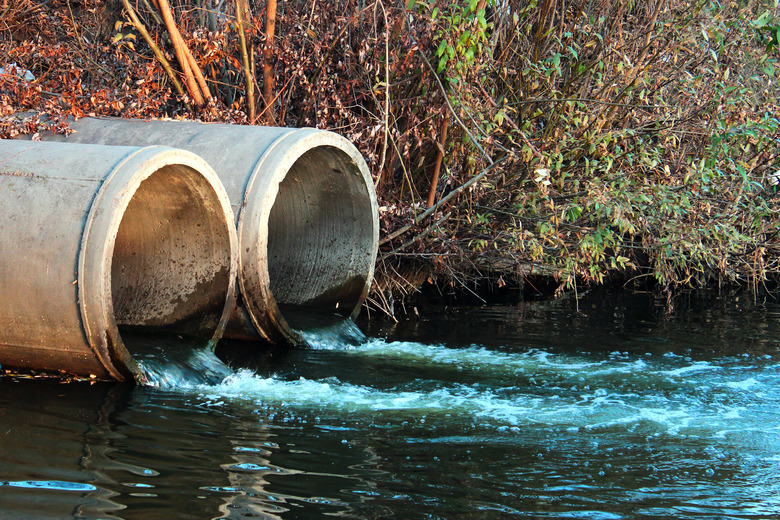The Effect Of Water Pollution On Land
Because water is in motion, the effects of water pollution are not confined to the water. Water flowing over land surfaces has the potential to pollute land resources and increase the environmental impacts of water pollution. In addition, other factors such as topography and flood potential can heighten the risk for certain areas.
Significance
Significance
Any land that comes in contact with contaminated water is at risk. According to the American Rivers, almost 40 percent of the nation's waterways are contaminated. Contamination of the floodplains of these polluted streams can easily occur during winter thaws and spring rains when river waters will overflow into the adjacent land.
Sources
Sources
Water pollution can have both direct and indirect sources. Direct sources include discharge from factories and businesses directly into surface water such as rivers and lakes. Pollution from indirect or diffuse sources is called nonpoint source pollution. Agricultural lands are a major source of water pollution, according to the U.S. Environmental Protection Agency (EPA). When it rains, water washes over the surface of contaminated lands, which eventually finds its way into aquatic resources. Potentially deadly environmental effects occur where land comes in contact with polluted waters.
Effects
Effects
The effect of water pollution on land will depend upon the nature of the pollutants. Acidic mine drainage (AMD) from abandoned mines, for example, can introduce a host of lethal toxins into the surface water including arsenic and lead. These types of contaminations are especially harmful to the land because they persist in the environment rather than breaking down. Over time, the concentrations can increase to toxic levels, which will not only affect the land, but also all the plants and wildlife that inhabit a contaminated area. According to the EPA, there are over 500,000 abandoned mines in the United States.
Other Factors
Other Factors
The potential for additional environmental threats from water pollution exists because of other factors, such as land cover type. Urban and developed areas typically contain large areas of impervious surfaces such as streets and sidewalks. The surfaces themselves often contain contaminated areas from motor oil and other pollutants. When rain occurs, the water flows over these surfaces increases and builds momentum due to the lack of resistance and absorption by plants. More land can potentially become polluted due to this toxic runoff.
Prevention/Solution
Prevention/Solution
The best solution for negative effects on land is to prevent water pollution from occurring. One way to accomplish this is through restoration of wetlands. Wetlands filter water passing through them by slowing the rate of flow. This slowing action causes the suspended particles in the water to drop down into the sediment layer. Over time, these particles, including toxic pollutants, become trapped in the sediment. Land pollution is prevented.
Cite This Article
MLA
Rogers, Chris Dinesen. "The Effect Of Water Pollution On Land" sciencing.com, https://www.sciencing.com/about-6399940-effect-water-pollution-land/. 22 November 2019.
APA
Rogers, Chris Dinesen. (2019, November 22). The Effect Of Water Pollution On Land. sciencing.com. Retrieved from https://www.sciencing.com/about-6399940-effect-water-pollution-land/
Chicago
Rogers, Chris Dinesen. The Effect Of Water Pollution On Land last modified August 30, 2022. https://www.sciencing.com/about-6399940-effect-water-pollution-land/
